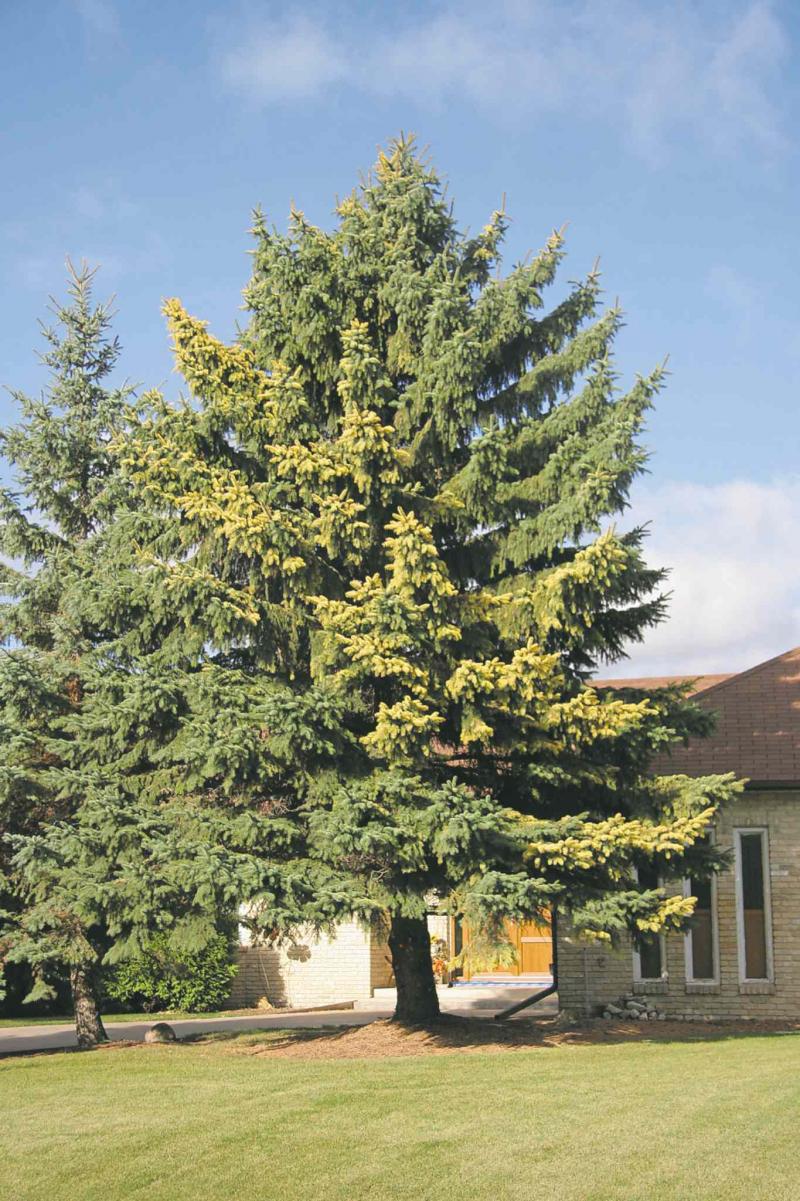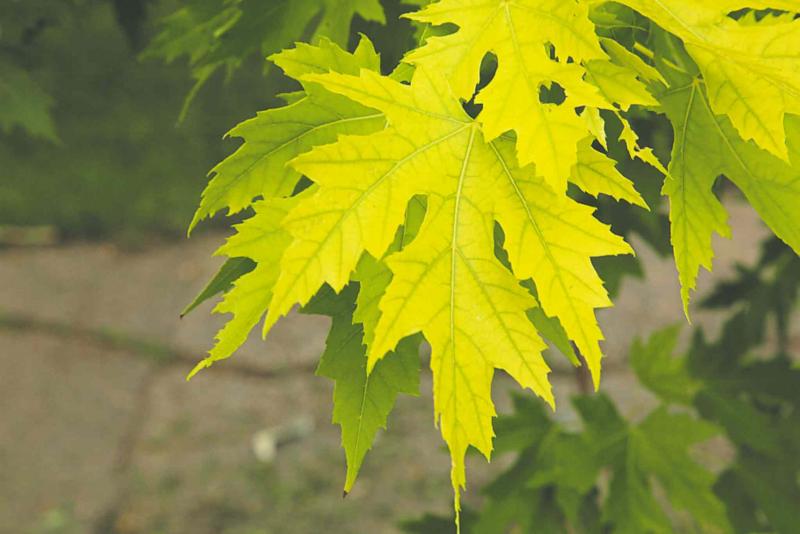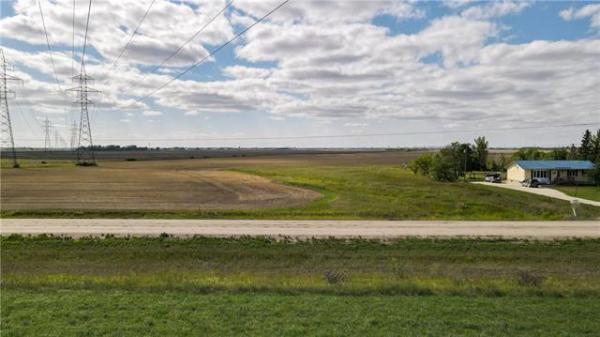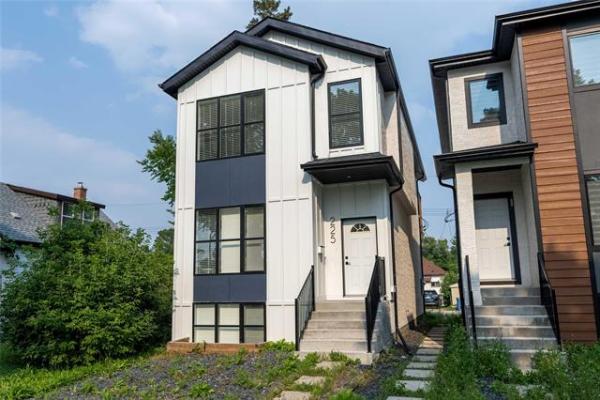


Here's a few questions I have received from readers in recent months. Questions regarding evergreen trees and shrubs often make up half of the inquiries I receive. This fall I have definitely had a number of inquiries leading to site visits about poplar trees.
Question: My large blue spruce tree has lost thousands of needles and several branches are dead. Will the tree ever grow back new branches? Joan G., Winnipeg
Answer: Spruce trees can sometimes surprise us with their ability to grow a second set of twigs with needles replacing those that died. Unfortunately not every spruce can do this. Here are some ideas you might want to try to encourage needle and twig regrowth in your tree.
The three most significant causes of dead branches in urban and shelterbelt spruce trees are Cytospora fungus canker disease which leave white-grey streaks and openings on branches and the trunk, tip blight disease which causes twigs to curl and leads to premature needle death especially on one side of the twig and pests such as spider mites and scale insects that suck the sap from needles and twigs. Aerating and fertilizing the tree in the spring and fall if possible will help; spraying copper fungicide at two or three intervals during the summer will help keep the disease in check over a three to four year period and regular power water washing infested needles and twigs each summer will help control spider mites and other pests. If you keep up these treatments you will see a positive improvement in your trees.
Question: I need to prune my globe cedars as they are blocking part of my front window. Can I do this safely without injuring them? When is the best time to prune them? Alec M., East St. Paul.
Answer: Like most coniferous evergreens such as spruce, pine, juniper and fir, it is a rule of thumb no more than a quarter of the existing green growth, including twigs and branches, be removed in any one year. The best time to train and prune the globe cedars is before they get to be a problem for your location. This would have been when the plants reached about half to 2/3 of the way to the height of the window sill. Pruning the cedars at one level such as the bottom of the window sill will eventually cause the depletion of green leaves and create a bare looking plant that will be unattractive. The cedars will also be significantly weakened in health. Removal of the cedars and starting again are now the best strategies. Cedars rarely produce new shoots on leafless twigs and branches as spruce trees sometimes do. June is the best month to trim all evergreens.
Question: Our silver maple tree is more than 50 feet (15 metres) high and we think it is dying. Its leaves are light yellow with brown spots on them. Many leaves have curled, turned brown and have fallen off. I am concerned the tree is diseased and it will fall over. Can I get it topped? Charles W., St. Vital.
Answer: I recommend treating the leaf problem first. The maple has chlorosis (yellow leaves with prominent green veins) which is sign of nitrogen (nitrate) and iron deficiency in the soil. With treatment the tree should not die. Annual spring fertilizing with a high nitrogen fertilizer and an iron chelate supplement will restore the green colour of the tree's leaves over a minimum continuous three year period. Silver maple trees do not topple over unless their roots have been damaged through significant ground disturbance such as construction. Ask a reputable arborist such as one certified through the International Society of Arboriculture (ISA) to reduce the crown of the maple using proper arboricultural techniques. All commercial arborists in Manitoba must have a valid arborist license to operate their business. Many of those arborists are not ISA certified.
Topping mature trees of any kind is always a destructive practice. Topping the silver maple will result in many sucker shoots arising from the base of the tree. Removing a large part of the tree's crown in an indiscriminate way will result in wood fungal decay and cause mechanical damage from weathering to the exposed cut limbs and stems. The tree becomes weaker and the resulting shoots arising from the ends of the cut stems or branches will be weakly attached to the rest of the tree. Large, heavy sucker shoots invariably break away from their weak attachments creating a hazard to people and property. Topping trees makes them more hazardous.
Question: We have an older Manchurian ash tree that has been doing well on our property for a number of years. This year we are noticing more and more leaves curling and turning patchy brown. Can you tell us what is going on? Donna P., Winnipeg.
Answer: Many ash trees this year are having this same problem. The browning and distortion of the leaves are caused by a leaf fungus disease called ash anthracnose. High humidity, periods of heavy rain are usually conditions that stimulate this fungus disease to grow in the tree. This is rarely a disease that kills ash trees. The disease can be controlled by having it sprayed with a copper sulfate fungicide usually twice starting in early June and repeated in early to mid-July. You will likely need to hire a professional spray applicator for a large ash tree.
Michael Allen M.Sc.F., RPF (ret'd) is a consulting urban forester, tree diagnostician and certified arborist. He owns Viburnum Tree Experts. He can be reached at 204-831-6503 or 204-223-7709. His new book, 'Dr. Tree's Guide to the Common Diseases of Urban Prairie Trees' provides detailed information about prairie tree problems.



